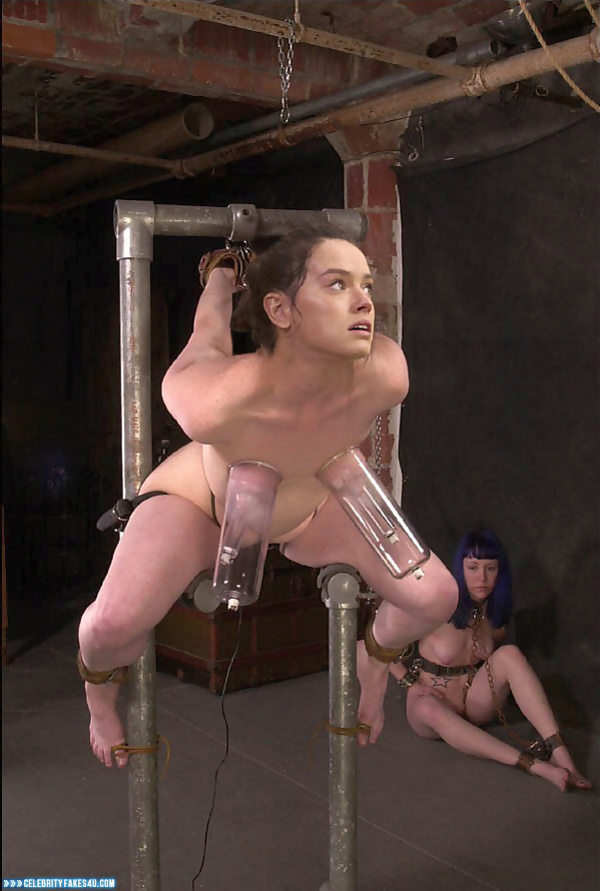Exploring BDSM Art: Meanings, Messages, And Modern Expression
Art has always been a powerful way for people to show what they feel and think, and that, is that, includes some of the more intense parts of human connection. When we talk about BDSM art, we are looking at creative works that explore themes of power dynamics, restraint, and pleasure. It's a fascinating area, really, that invites us to think about what freedom and control mean in different situations. This kind of art often pushes the edges of what we typically see, making us look closer at our own ideas about relationships and expression.
For many, the idea of BDSM might bring up specific thoughts, perhaps from popular culture or just general talk. However, as our healthy sex guide explains, the core of BDSM involves things like bondage and discipline, dominance and submission, and a focus on consent and clear boundaries. These elements, you know, which are so important in personal interactions, also show up in art. Artists use these concepts to tell stories, to make us feel something, or just to show a different view of human experience, which is pretty cool.
This article will take a closer look at what BDSM art means, how artists use these powerful themes, and why this kind of creative work matters today. We will also touch on how these pieces often start conversations about consent and personal limits, which are, as a matter of fact, very important topics for anyone interested in exploring these ideas. So, let's just see how art can help us understand more about ourselves and others.
- Whispers Of Manifestation On Borlest
- Mikafans Leaks
- How To Say I Love You In French
- How To Make Stickers
- How To Get Nail Glue Off Skin
Table of Contents
- What is BDSM Art?
- The Language of BDSM in Visuals
- Consent and Boundaries: A Core Message
- Artists and Their Expressions
- Finding and Appreciating BDSM Art
- Frequently Asked Questions About BDSM Art
- A Look at Its Impact
What is BDSM Art?
BDSM art, you see, refers to creative works that show or are inspired by themes of bondage, discipline, dominance, submission, and sadomasochism. It's a broad category, really, that can include paintings, sculptures, photographs, performance art, and even digital creations. The art might directly show scenes of these practices, or it might just hint at the feelings and ideas connected to them. It's not always about showing something explicit; sometimes, it's about the feeling of control, or maybe, the release that comes with it.
At its heart, this kind of art often explores human desires, power dynamics, and the complexities of relationships. It can be quite thought-provoking, you know, asking us to consider what it means to give up control, or to take it. The artists who create these pieces often use visual cues, like specific poses, materials, or settings, to get their message across. It's a way, perhaps, to talk about things that are sometimes hard to put into words, or that people might not often discuss openly.
A lot of the time, this art also challenges traditional ideas about what is "normal" or "acceptable" in society, especially when it comes to sexuality and personal freedom. It can be a way to open up conversations, you know, and to make people think differently about things. The pieces can be beautiful, disturbing, or both at the same time, depending on the artist's goal and the viewer's own perspective. It's, as a matter of fact, a very personal experience for many.
- 405 Howard Street San Francisco
- Morty And Rick Cast
- La Casa De Los Famosos Vota
- Highest Block Blast Score
- How Many Children Does Pam Bondi Have
The Language of BDSM in Visuals
When artists use BDSM themes, they are drawing on a rich set of ideas and actions that have deep meaning for many people. It's like they're using a special language, you know, that communicates something beyond just the surface. The art often focuses on the feelings of intensity, trust, and connection that are so central to these practices. It's not just about what you see, but what you feel when you look at it.
For instance, an artist might use ropes or chains not just as objects, but as symbols of connection or restriction. A pose might suggest a power dynamic without showing any direct action. This symbolic use of elements allows the art to speak to a wider audience, you see, even those who might not be familiar with BDSM itself. It's a way to explore universal human experiences through a specific lens, which is quite clever.
The visual stories told through BDSM art can be quite varied. Some pieces might be very direct, showing scenes that are clearly about dominance or submission. Others are much more subtle, using abstract forms or suggestive imagery to create a mood or feeling. It's, as a matter of fact, a very diverse area of artistic expression, with many different ways to tell a story.
Bondage and Restraint in Art
Bondage, as our healthy sex guide explains, is a form of play that really focuses on restraint. In art, this often translates into images where bodies are tied, wrapped, or otherwise held. The ropes or fabrics used can be beautiful, you know, creating interesting lines and shapes that draw the eye. It's not always about being trapped; sometimes, it's about the beauty of the form created by the restraint, or the feeling of surrender.
Artists might use different materials to show restraint, from soft silks to strong leather or metal. Each material can bring a different feeling to the piece. For instance, soft fabric might suggest a gentle holding, while metal might hint at something more firm or unyielding. The way light hits these materials can also change the mood quite a bit, you see, making the piece feel different depending on how you look at it.
These artistic expressions of bondage can also explore ideas of trust and vulnerability. When someone is restrained, they are putting a lot of trust in the person doing the restraining. This trust, you know, is a very strong theme that artists often try to capture. It's a way to show the deep connection that can exist between people, even in situations that seem unusual to some, which is rather interesting.
Dominance and Submission as Themes
Our guide tells us that BDSM describes aspects of sex that involve dominance, submission, and control, often with one partner taking a more dominant role. In art, these roles are shown through body language, positioning, and sometimes, the use of symbols. An artist might show one figure standing tall and confident, while another kneels or looks up, showing a clear power dynamic without needing many words.
The interplay of light and shadow is often used to emphasize these roles. A dominant figure might be brightly lit, for example, while a submissive one is partly in shadow, or vice versa, depending on the artist's message. The expressions on the faces of the subjects, too, are very important, conveying feelings of intensity, peace, or anticipation. It's a subtle way, you know, to show a lot of feeling.
These themes in art can also be about the psychological side of dominance and submission. It's not just about physical actions; it's about the mental connection, the give and take of control. Artists often try to capture the emotional depth of these interactions, showing the complexity of human desires and the different ways people relate to each other, which is, actually, quite profound.
Sadomasochism and Sensory Exploration
Sadomasochism, often shortened to SM, involves finding pleasure in giving or receiving pain, or other intense sensations. In art, this isn't usually about showing actual harm, but rather about exploring the edge of sensation and the feelings that come with it. It might be about the feeling of a whip on skin, or the anticipation of a strong touch, you know, all shown in a way that suggests intensity without being graphic.
Artists use color, texture, and composition to evoke these sensory experiences. Bright, contrasting colors might suggest a jolt of feeling, while soft, blurred lines could hint at a more diffused sensation. The materials used in the art itself, like rough textures or smooth surfaces, can also make you think about touch and feeling, which is pretty clever, you see.
This part of BDSM art often pushes boundaries, asking viewers to think about what pleasure means and how it can be found in unexpected places. It's a way to explore the full range of human experience, even the parts that might seem a bit challenging to some. The art invites us to consider the idea that sensation, in all its forms, can be a source of deep feeling, which is, in some respects, a very human thing.
Consent and Boundaries: A Core Message
Our expert guide to BDSM highlights consent and boundaries as incredibly important. This idea is, as a matter of fact, just as crucial in BDSM art as it is in practice. While the art itself might show intense scenes, the underlying message often supports the idea that all interactions, even artistic ones, should respect personal limits and mutual agreement. It's a big part of the conversation around this art.
Many artists who create BDSM-themed works are very careful to show respect for the subjects and the themes they are exploring. They might use subtle cues to suggest that the interactions shown are consensual, or they might talk about the importance of consent in their artist statements. This helps to make sure the art is not just about shock value, but about deeper meanings, which is very important.
The presence of consent in the discussion around BDSM art helps to educate viewers and challenge common misunderstandings. It shows that these themes, while intense, are often about trust, communication, and mutual respect. This focus on ethical considerations makes the art more meaningful and helps people see the depth behind the imagery, which is, you know, a very good thing for everyone.
Artists and Their Expressions
Throughout history, artists have explored themes of power, desire, and the body in ways that, in some respects, touch upon what we now call BDSM. From classical sculptures showing figures in bound poses to modern photography that plays with control and surrender, the ideas have been around for a long time. Today, a lot of contemporary artists are openly creating BDSM art, using it to comment on society, identity, and personal freedom.
These artists come from all sorts of backgrounds and use many different styles. Some might create highly realistic pieces, while others prefer abstract or conceptual approaches. What they often share, though, is a desire to express something deeply human and sometimes a bit challenging. They might use their own experiences, or they might draw inspiration from stories and myths, which is pretty common.
The rise of digital art and online platforms has also given more artists a way to share their BDSM-inspired work with a wider audience. This has helped to make the art more accessible and has encouraged more conversations about these themes. It's, as a matter of fact, a very exciting time for this kind of creative expression, with new voices and perspectives appearing all the time, which is really cool.
Finding and Appreciating BDSM Art
If you are interested in finding and appreciating BDSM art, there are several places to look. Online galleries and specialized art websites often feature this kind of work. Some contemporary art galleries, especially those that focus on challenging or avant-garde pieces, might also show BDSM-inspired art. It's worth remembering, too, that art is often about personal connection, so what one person likes, another might not.
When you look at BDSM art, it can be helpful to think about the artist's intent. What message are they trying to send? How do the elements in the piece—the colors, the forms, the textures—make you feel? It's not always about understanding everything perfectly, you know, but about letting the art speak to you. Sometimes, the most powerful pieces are the ones that make you think or feel something unexpected.
For those who want to learn more about the broader context of erotic art and its history, looking at academic resources or art history books can be very helpful. Institutions like the Metropolitan Museum of Art sometimes have collections or discussions that touch on these themes, showing how eroticism has been a part of art for centuries. This can give you a better idea of where BDSM art fits into the larger picture, which is pretty neat.
Frequently Asked Questions About BDSM Art
Is BDSM art just about shock value?
Not at all, actually. While some pieces might seem provocative, most BDSM art aims to explore deep human themes like power, trust, desire, and vulnerability. It's often about expressing complex emotions or social ideas, you know, rather than just trying to surprise people. Artists use these themes to start conversations and make us think about different kinds of relationships.
Is BDSM art always explicit?
No, it's not always explicit. BDSM art can range from very direct depictions to highly symbolic or abstract works. Many artists choose to hint at themes of control, submission, or restraint through body language, composition, or subtle imagery, you see, without showing anything graphic. It's more about the feeling or the idea than just the literal action, which is quite interesting.
How does consent relate to BDSM art?
Consent is, as a matter of fact, a very important part of BDSM culture, and this carries over into the art. Many artists who create BDSM-themed works are very mindful of showing respect for the subjects and the themes. They often want to convey that the power dynamics shown are based on mutual agreement and trust, even if the scene looks intense. It's a way to challenge common misunderstandings and show the ethical side of these practices, which is pretty good.
A Look at Its Impact
BDSM art, you know, plays a role in making conversations about diverse forms of sexuality and human connection more open. By putting these themes into a creative space, artists help to normalize discussions that might otherwise be seen as taboo. This can be very helpful for people who are exploring their own identities or who want to understand others better. It shows that there are many ways to express oneself, which is a good thing.
The art also challenges us to think about power in different ways, not just in terms of control, but also in terms of surrender and trust. It asks us to consider the beauty and complexity that can exist in relationships that push traditional boundaries. This kind of reflection, you see, can be very enriching, helping us to see the world with a bit more understanding and a wider view.
Ultimately, BDSM art is a vibrant part of the larger art world, continuing to evolve and inspire. It reminds us that art is a place for all kinds of expressions, even those that might be considered a little bit daring. As we move forward, it's clear that these themes will keep appearing in creative works, inviting us to keep thinking and feeling. So, it's something that will likely remain a topic of interest for a long time.
- Whispers Of Manifestation On Borlest
- How Do I Say Goodbye Lyrics
- How To Cook Scallops
- More Than A Married Couple
- Do A Barrel Barrel Roll

My BDSM collection - pic of 69

BDSM porn compilation - pic of 25

Hard BDSM porn pics - pic of 31